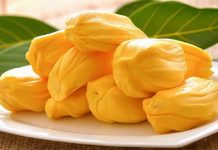Family: Sterculiaceae
Synonym: Pentapetes acerifolia L.
Bengali/Vernacular name: Kanak champa, Katchampa, Mushkand (Bengali); Muchkunda, Mooch (Chittagong); Madhurabura (Sylhet).
Tribal name: Sohralum (Chakma), Chasyabaong (Marma), Mounoajaya (Tanchangya).
English name: Mapple-leaved bayur, Dinnerplate tree.
Description of the Plant: A large evergreen tree, up to 30 m tall, with grey bark and rusty young parts. Leaves large, polymorphous, 18-40 x 12-30 cm, peltate with cordate base, lobed or remotely toothed, palmately 8-10 veined. Flowers large, white, fragrant, solitary or in 2-3 flowered cymes. Fruit a capsule, 5-10 cm long, 5-valved, rusty brown-glabrescent, seeds many, ovate with a thin wing.
Plant parts Used: Leaf, bark, flower, and root.
Traditional
Uses: Bark of the plant is used to treat impotence.
Bark is used to treat scabies.
The indumentum from the lower side of leaf is said to be used to prevent
bleeding from wounds.
A good tonic prepared from the flowers is cured for inflammation, ulcers,
tumors, blood troubles, and leprosy.
Paste prepared from the bark and leaves are used in small pox treatment.
Bark useful in intestinal complaints, anemia, and pain.
Leaf paste is applied to treat headache.
A tonic made from the flowers of the plant is used as cure for abdominal pain,
indigestion, and dehydration.
Paste made with the calyx is applied to glandular swellings around neck.
Roots juice is given as antidote in poisoning; roots of the plant are
applied as a paste to the wounds.
Distribution: This species is found in the forests of Chittagong, Cox’s Bazar, Sylhet districts, and Chittagong Hill Tracts.
Is this plant misidentified? If yes, please tell us….














